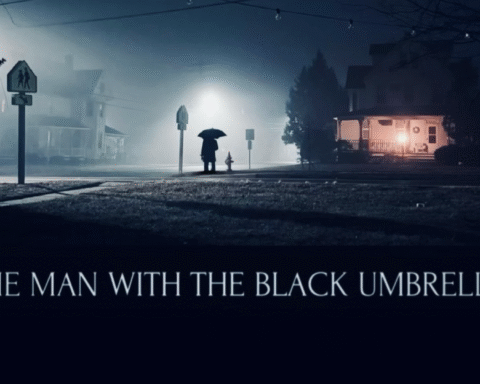In the saturated landscape of found footage horror, Jung Bum-shik’s 2018 film “Gonjiam: Haunted Asylum” stands as a watershed moment in Korean cinema. As the first Korean found footage horror film, it not only broke new ground in the nation’s film industry but emerged as a masterclass in digital-age terror. The film follows a team of horror web-show creators who venture into the abandoned Gonjiam Psychiatric Hospital, livestreaming their investigation for an audience hungry for authentic scares. What unfolds is a remarkable synthesis of traditional Korean horror elements with contemporary digital culture.

Breaking New Ground in Korean Cinema
The significance of “Gonjiam” as Korea’s first found footage horror film cannot be overstated. While the found footage genre had flourished internationally since “The Blair Witch Project” in 1999, Korean horror cinema had largely focused on traditional narrative structures, often exploring themes of family trauma, revenge, and social inequality through conventional cinematography. Films like “A Tale of Two Sisters” (2003) and “The Wailing” (2016) exemplified this approach, creating atmospheric horror through carefully composed shots and deliberate pacing.
“Gonjiam” represented a radical departure from this established tradition. By adopting the found footage format, Jung Bum-shik not only introduced a new visual language to Korean horror but also created a bridge between traditional supernatural elements of Korean folklore and modern digital culture. This pioneering move opened doors for future Korean filmmakers to experiment with alternative narrative structures and filming techniques.
Digital Innovation in Storytelling
The genius of “Gonjiam” lies in its understanding of modern viewership. The film’s protagonists aren’t simply recording their experience – they’re performing it. Through their livestream setup, we witness horror through multiple perspectives: the handheld cameras, static surveillance feeds, and personal body cams. This multi-angle approach creates a layered viewing experience that mirrors our own fractured digital consumption habits.
Jung’s direction particularly shines in his manipulation of screen space. The livestream interface becomes a canvas where horror manifests in unexpected ways. Comments scroll past genuine terrors, viewer counts spike during moments of tension, and technical glitches serve as harbingers of supernatural presence. The film transforms these digital artifacts into instruments of dread, suggesting that our connected world might be just as haunted as any abandoned asylum.
Cultural Resonance and Historical Weight
The film’s setting – the real-life Gonjiam Psychiatric Hospital – carries its own weight of cultural significance. Once listed among CNN’s seven freakiest places on Earth, the actual hospital has become a symbol of Korea’s complex relationship with mental health institutions and their histories. Jung’s film doesn’t merely exploit this location for cheap scares; it explores how digital media transforms real places into mythological spaces.
The abandoned hospital serves as a perfect metaphor for Korea’s rapid modernization and the spaces left behind in its wake. By choosing this location, the film taps into deeper societal anxieties about forgotten histories and unresolved traumas, themes that have long been central to Korean horror cinema.
The Digital Age Performance Anxiety
What sets “Gonjiam” apart from its found footage predecessors is its understanding of performance anxiety in the digital age. The characters’ need to create engaging content while investigating the supernatural creates a unique tension. Their desire for views and likes pushes them deeper into danger, making a pointed commentary about the lengths content creators go to for engagement.
The film presents a meta-commentary on the nature of entertainment in the social media era. The characters’ desperation for viral success mirrors the broader societal pressure to perform and document our lives for online consumption. This adds a layer of social commentary that elevates the film beyond simple horror.




Technical Mastery and Scare Crafting
The film’s scares are masterfully crafted, building from subtle disturbances to full-blown supernatural encounters. Jung understands that in the age of CGI spectacle, sometimes the most effective horror comes from suggestion and anticipation. A chair moving slightly on a thermal camera feed can be more terrifying than any elaborate special effect.
The technical achievement of seamlessly integrating multiple camera feeds, social media interfaces, and traditional horror elements cannot be understated. The film creates a new visual language for Korean horror, one that acknowledges both the genre’s past and its future.
Legacy and Impact
“Gonjiam: Haunted Asylum” represents a significant evolution in both Korean cinema and found footage horror. Its success – becoming one of Korea’s highest-grossing horror films – proves that audiences are ready for horror that reflects their digital reality. As Korea’s first venture into found footage horror, it set a high bar for future entries in the genre.
The film’s influence can be seen in the subsequent wave of digital-age horror films and web series in Korea and across Asia. It demonstrated that traditional horror elements could be successfully married with modern storytelling techniques, paving the way for more experimentation in the genre.
A New Chapter in Horror
As we continue to navigate an increasingly digital world, “Gonjiam: Haunted Asylum” remains a powerful reminder of how horror can adapt and evolve. Its significance as Korea’s first found footage horror film is matched by its artistic achievements and cultural commentary. The film suggests that as our methods of documentation evolve, so too do our ghosts, finding new ways to haunt us through the very devices we use to capture them.
In the landscape of Korean cinema, “Gonjiam” stands as a milestone that marks the beginning of a new chapter in horror storytelling. It proves that innovation in form doesn’t have to come at the expense of cultural specificity or genuine scares. As Korean cinema continues to gain global recognition, “Gonjiam” will be remembered as the film that brought Korean horror into the digital age, while maintaining the psychological depth and social commentary that makes Korean cinema so compelling.

![Gonjiam: Haunted Asylum (Limited Edition) [Blu-ray]](https://m.media-amazon.com/images/I/41yoT1-NzmL.jpg)








